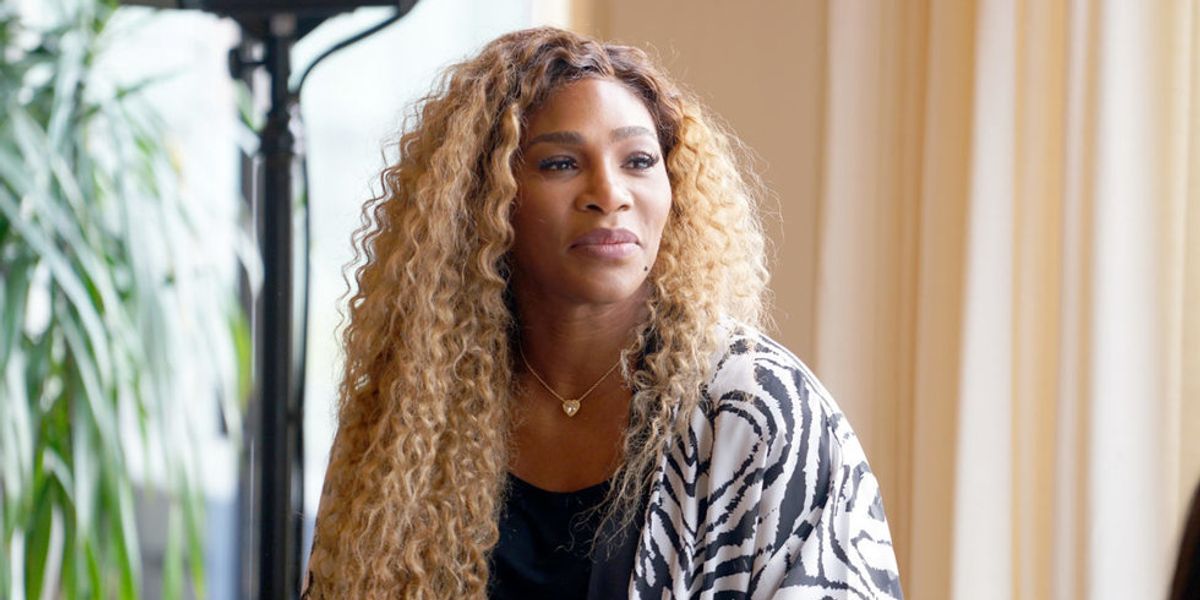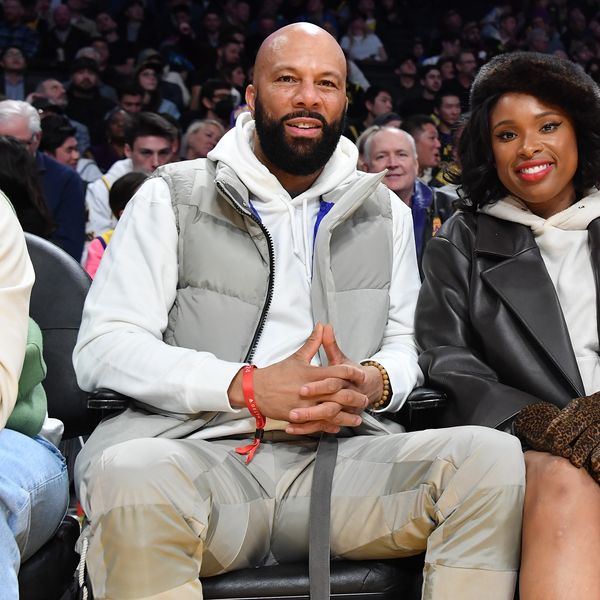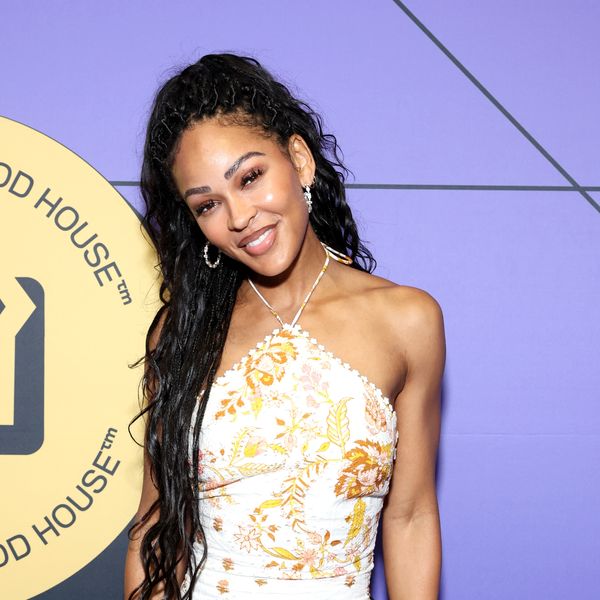
Serena Williams Recalls Harrowing Birth Of Daughter: 'No One Was Listening To Me’
Serena Williams is a mother to four-year-old Alexis Olympia Ohanian Jr. whom she shares with her husband Alexis Ohanian. Being that Alexis was the tennis champ’s first and only child, Serena excitedly was ready to have the full experience of being pregnant, pains and all. But what she didn’t know was that she would almost lose her life in the process. The Centers for Disease Control and Prevention reported that Black women are three times more likely to experience a pregnancy-related death than white women.
The 23-time Grand Slam winner wrote an essay about her alarming childbirth experience for Elle, in which she recalled feeling like she was going to die. However, leading up to the day she was to give birth, Serena enjoyed her pregnancy.
“I was completely in the moment,” she wrote. “I loved the cramps. I loved feeling my body trying to push the baby out. I wasn’t on an epidural; to get through it, I was using my breath and all the techniques I’d learned from birth training (I had taken every birthing class that the hospital had to offer).” Once her contractions started to come more frequently and the baby’s heart rate kept going up and down, the doctors decided to give her a C-section and she gave birth to Olympia.
“When I finally saw her—and I just knew it was going to be a girl, that was one thing I knew about her before we even had it confirmed—I loved her right away,” she wrote. “It wasn’t exactly instantaneous, but it was there, and from that seed, it grew. I couldn’t stop staring at her, my Olympia.”
But after giving birth, problems arose. In 2010, Serena was diagnosed with blood clots and she feared that they would return. After giving birth, she felt paralyzed and couldn’t get out of the bed because her legs were numb. She began asking for a heparin drip, which helps prevent blood clots but her concerns were ignored.
“No one was really listening to what I was saying. The logic for not starting the blood thinners was that it could cause my C-section wound to bleed, which is true. Still, I felt it was important and kept pressing,” she wrote. But it got worse from there. She began coughing hysterically, which ripped her stitches from her C-section and she had to go back into surgery. Little did she know that one surgery would turn into four surgeries after doctors found blood clots. Before her third surgery, she demanded that the nurses give her a CAT scan and a heparin drip and after some persistence, they finally gave in.
“Finally, the nurse called my doctor, and she listened to me and insisted we check. I fought hard, and I ended up getting the CAT scan. I’m so grateful to her,” she wrote. “Lo and behold, I had a blood clot in my lungs, and they needed to insert a filter into my veins to break up the clot before it reached my heart.” After a week of back-to-back surgeries, Serena was finally able to take her daughter home.
Serena’s harrowing experience is just one of many pregnant Black women have faced. Here are some other Black women who had similar stories.
Tatyana Ali
“When I asked my OB-GYN what positions I could be in during labor and delivery, he said that I ‘could hang from the lights’ if that made me happy,” she said. “This being my first birth, the dismissal of my very earnest query into birthing techniques hurt. I felt silly. That should have been a warning.”
She continued, “One doctor climbed onto the side of the bed and pushed his forearm into my belly so hard that I could still feel the pain days later. My baby had been crowned for hours. I could feel his hair. We said 'no’ when they offered forceps. They used a suction, a plunger-type apparatus, and tried four times. The suction aggressively popped off of his head again and again. I knew instinctively that they would hurt my baby irreparably if this circus continued.”
It got even more dangerous when the actress asked to have a C-section. She recalled how a doctor “pushed my baby back inside me in an extremely dangerous procedure called the Zavanelli maneuver. I began to convulse and shake. Then my world went dark.”
Once her son, Edward, was born, he was put in the neonatal intensive care unit, and he couldn’t urinate without assistance “because of his traumatic birth.” via SheKnows.
Allyson Felix
Allyson Felix opened up about being diagnosed with preeclampsia and having to undergo a C-section when she gave birth to her daughter Camryn. “I’m an athlete. I take great care of my body and was in great health. I had a birthing plan. I was at one of the best hospitals in the country. There was no way anything could go wrong, right? But my eyes were completely opened to the fact that no one is immune from this reality and that Black women face significantly higher risks– ones I wasn’t really aware of and looking for.” via Today.
Beyoncé
“I was 218 pounds the day I gave birth to Rumi and Sir. I was swollen from toxemia and had been on bed rest for over a month. My health and my babies’ health were in danger, so I had an emergency C-section. We spent many weeks in the NICU. My husband was a soldier and such a strong support system for me. I am proud to have been a witness to his strength and evolution as a man, a best friend, and a father. I was in survival mode and did not grasp it all until months later.”
“Today I have a connection to any parent who has been through such an experience. After the C-section, my core felt different. It had been major surgery. Some of your organs are shifted temporarily, and in rare cases, removed temporarily during delivery. I am not sure everyone understands that. I needed time to heal, to recover. During my recovery, I gave myself self-love and self-care, and I embraced being curvier. I accepted what my body wanted to be. After six months, I started preparing for Coachella. I became vegan temporarily, gave up coffee, alcohol, and all fruit drinks. But I was patient with myself and enjoyed my fuller curves. My kids and husband did, too.” via Vogue.
Let’s make things inbox official! Sign up for the xoNecole newsletter for daily love, wellness, career, and exclusive content delivered straight to your inbox.
Featured image by Getty Images
This article is sponsored by Hulu.
UnPrisonedhas returned for its highly anticipated second season, delving deeper into the complex dynamics of the Alexander family.
The series premiere comes a year after its debut season garnered rave reviews from fans and critics and earned record-breaking ratings for Hulu's Onyx Collective brand. UnPrisoned's success can be attributed to its raw, relatable themes and comedic appeal.
Inspired by creator Tracy McMillan's life, the show follows Paige (Kerry Washington), a therapist and single mother whose life takes an unexpected turn when her father, Edwin (Delroy Lindo) --who was released from prison-- moves in with her and her teenage son, Finn (Faly Rakotohavana).
Throughout UnPrisoned's first season, viewers witnessed how Edwin's incarceration deeply affected Paige's life and relationships. In the series, Paige unpacks her trauma through interactions with her inner child and her online followers. Meanwhile, Edwin is overcoming specific struggles with his own past that led to his life of crime, including a dysfunctional upbringing and his mother's arrest. As the Alexanders attempt to reconcile, new challenges arise.
This new season promises to further explore their unconventional family dynamic. Here are several compelling reasons why season two of UnPrisoned should be on everyone's watchlist.
The Alexander Family Life Is Still In Shambles
UnPrisoned's second season resumes where the series left off, with Paige grappling with the fallout from her troubled therapy practice and Edwin navigating life independently after moving out. Meanwhile, Finn faces his own challenges. The teenager is battling anxiety and seeking information about his father—a topic Paige avoids discussing.
The Alexander Family Are Attending Therapy To Resolve Their Underlying Issues
Amid the chaos in their lives, the Alexander family decides to mend their bond by confronting their past traumas. They seek professional help and attend therapy sessions with a “family radical healing coach,” played by John Stamos, a new cast member. This collective effort aims to unravel the complexities of their shared history and strengthen their relationships.
The process of unraveling each character's internal conflicts and their potential impact on future relationships may clash with Paige's textbook therapy approach. While Paige is used to being in the therapist's seat in both career and family, this forces her into the unfamiliar role of a patient during therapy sessions. This shift would compel her to look in the mirror and try a radically different approach.
The Alexander Family Learned A Big Lesson During A Therapy Session
In therapy, the Alexanders are tasked with addressing their individual traumas to salvage their remaining relationships. One of the family therapist’s eccentric suggestions was an exercise involving a family wrestling match. During this session, Paige faces tough questions about her refusal to share information about Finn's father.
While it's unclear whether this scene is reality or fantasy, the image of the family duking it out in the ring certainly makes for hilarious yet compelling television.
Paige Tries Dating Again Following Failed Relationships
Amid her life's chaos, Paige decides to step back into the dating field. However, her many attempts have left her with mixed results. The dating apps have turned out to be a fail, and an outing with her ex Mal (Marque Richardson), who is also her father's parole officer, doesn’t go quite as expected after he brings an unexpected guest – his new girlfriend.
The situation takes an awkward turn when Mal's new partner learns why the former couple split, partly due to Paige's self-sabotage.
UnPrisoned Is A Perfect Balance Of Comedy And Drama
As a dramedy, UnPrisoned takes a comedic approach to its heavy subjects. The show takes us on a ride with Paige's dating misadventures and navigating a friendship with her ex.
Other lighthearted moments include Edwin's attempts at CPR based on online videos and, of course, the antics of the Alexander family's unconventional new healing coach.
The second season of UnPrisoned is now available on Hulu.
UnPrisoned | Season 2 Trailer | Hulu
Feature image courtesy
Blair Underwood Initially Turned Down 'Sex And The City' Because 'It Was About How Samantha Was Fascinated By Dating A Black Man’
Actor and heartthrob Blair Underwood is opening up about why he turned down Sex and the City the first time he was offered a role. Many fans of the HBO series may recall Blair's time on the show in which his character was dating Miranda (Cynthia Nixon). However, he was previously offered another role where his character would date Samantha (Kim Cattrall).
During his interview with AV Club, the Set It Off star revealed that he was uncomfortable with the initial offer due to the character's fascination with him being a Black man.
“I actually did say ‘no’ the first time,” he said. “The first time they had offered the role, to be honest with you, it was about how Samantha was fascinated by dating a Black man and wanted to know if, uh, all of the rumors were true about our anatomy! And I said, ‘Listen, I’m honored, thank you, but I just don’t want to play a character based on race, on curiosity about a Black man.'”
But that didn't stop them from reaching out again. This time he was offered to play Dr. Robert Leeds, the love interest to Miranda and he decided to go for it. "So they were nice enough to call about a year later, and I said, 'Well, is it gonna be about race?' And they said, 'No, no, no, we’re not even gonna mention race!' And I think it really did only come up maybe once," he recalled.
"It did five episodes, and I think Samantha mentioned it once, saying something about 'a Black doctor' that Miranda was dating. And that’s really been a consistent thing in my career: not wanting to be boxed as 'the Black guy.'
"I’ve had that conversation with many producers along the way, and they were so great. They said, 'No, he’s just a doctor who Miranda meets in the elevator, and they have a nice little fling.' And it was amazing."
Blair has had a wide-ranging career playing everything from a lawyer on L.A. Law to playing Madame CJ Walker's husband on Self Made: Inspired by the Life of Madame CJ Walker. And during his interview, he revealed another role that he initially turned down, Set It Off. The movie, which is considered a classic in Black culture, stars Queen Latifah, Jada Pinkett Smith, Vivica A. Fox, and Kimberly Elise. Blair's character, Keith, played a banker and love interest to Jada's character, Stony.
He explained why he said no at first and eventually accepted the offer. "I had initially said “no” to that. Because I was playing this historic, iconic African-American historical figure in Jackie Robinson, and the time, y’know, there was Boyz N The Hood, and Menace II Society was out there, and I’d finished playing this noble Negro… [Laughs]," he said.
"And I’m reading the script, and there’s a scene where Jada Pinkett’s character—Jada Pinkett-Smith now—was going to sell her body so she could make some money to send her brother to college. And I remember, honestly, I threw the script across the room. I was, like, “I don’t want to do this. I want to do something uplifting for the Black culture and Black characters, and I don’t know if I want to see this.”
After a conversation with the movie's director F. Gary Gray and the actor's manager encouraging him to finish reading the script, Blair had a change of heart. What he first thought about the movie turned out to be totally different.
"So I finished the script, and I saw that the character they were asking me to play was really the love story in the midst of all of this turmoil of all of these characters, the four ladies: Queen Latifah, Vivica Fox, Kimberly Elise, and Jada," he explained.
"It was so well-written, it was such a great platform for them. And to be able to play the love story and the storyline that gave Jada’s character a leg up and a way out of this world, something to hope for, to wish for, someone to love her… I said, 'You know what? I’d like to be a part of that.'
"And I’m so glad I did, because that film resonates to this day. People all the time come up to me and say that they love that movie. So I’m glad that I did it."









